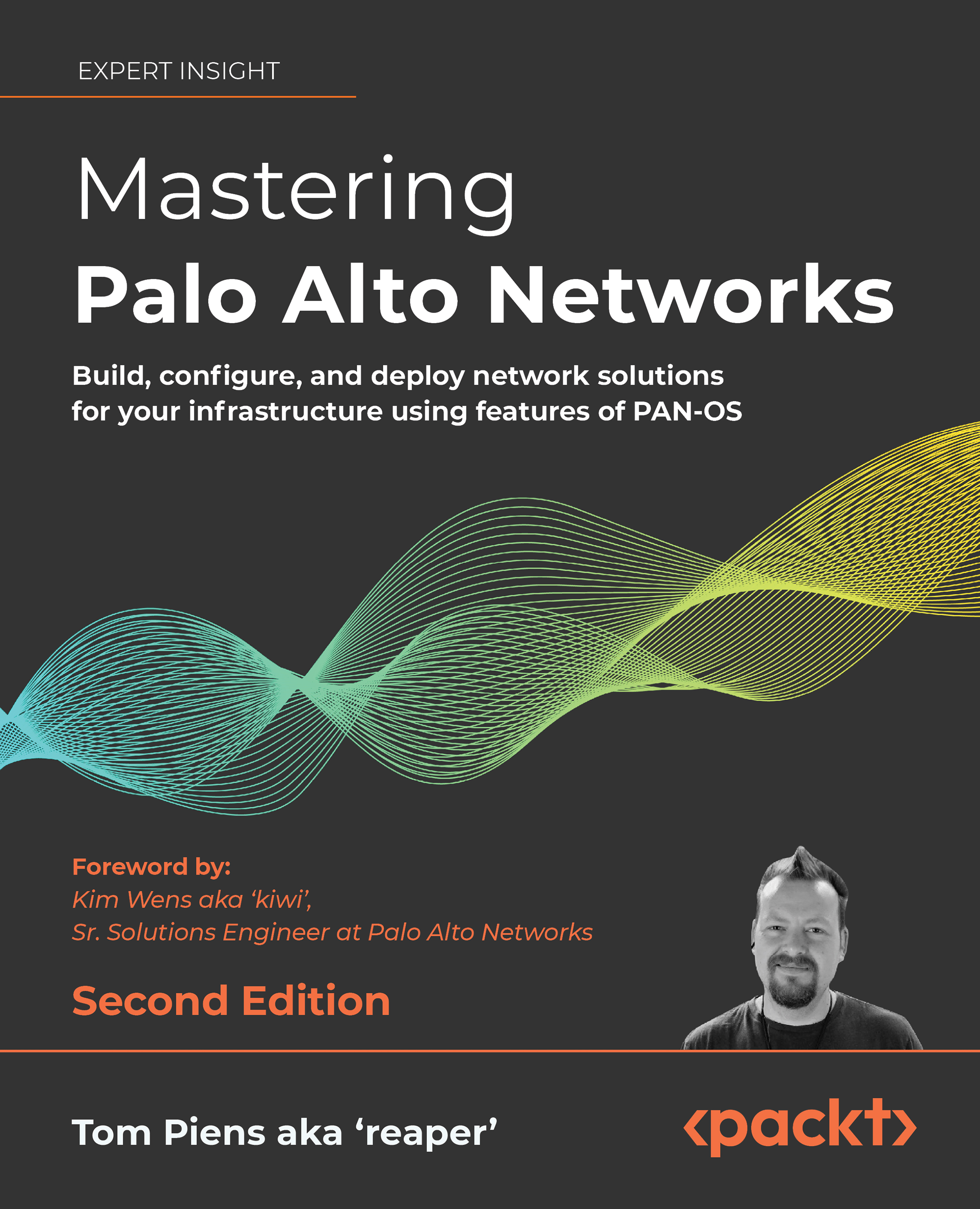Understanding and building security rules
We now need to build some security rules to allow or deny traffic in and out of the network. The default rules will only allow intrazone traffic and will block everything else, as you can see here:

Figure 3.24: Default security rules
In the next sections, we will start to build a rule base, making sure we first introduce some rules to drop undesirable sources and destinations, followed by adding permissive policies focused on allowing applications required by the users in a secure way, leveraging App-ID to ensure only the intended applications are let through. Finally, we’ll look in more detail at which objects make up rule bases and how the rules can be kept tidy after having been in use for a while.
We will first make sure “bad” traffic is dropped by creating two new rules—one for inbound and one for outbound traffic.
Dropping “bad” traffic
The inbound rule will have the...

































































